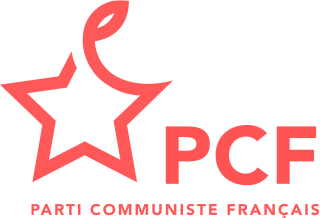
The French Communist Party is a political party in France which advocates the principles of communism. The PCF is a member of the Party of the European Left, and its MEPs sit with The Left in the European Parliament – GUE/NGL group.

The General Confederation of Labour is a national trade union center, founded in 1895 in the city of Limoges. It is the first of the five major French confederations of trade unions.
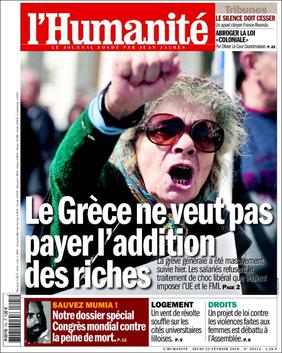
L'Humanité is a French daily newspaper. It was previously an organ of the SFIO, de facto, and thereafter of the French Communist Party (PCF), and maintains links to the party. Its slogan is "In an ideal world, L'Humanité would not exist."
The Twenty-one Conditions, officially the Conditions of Admission to the Communist International, refer to the conditions, most of which were suggested by Vladimir Lenin, to the adhesion of the socialist parties to the Third International (Comintern) created in 1919. The conditions were formally adopted by the Second Congress of the Comintern in 1920.
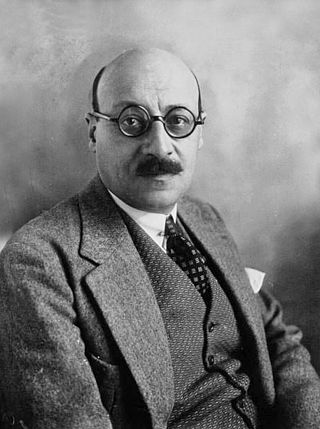
Ludovic-Oscar Frossard, also known as L.-O. Frossard or Oscar Frossard, was a French socialist and communist politician. He was a founding member in 1905 and Secretary-General of the French Socialist Party (SFIO) from 1918 to 1920, as well as a founding member and Secretary-General of the French Communist Party (PCF) from 1920 to 1922.
The Tours Congress was the 18th National Congress of the French Section of the Workers' International, or SFIO, which took place in Tours on 25–30 December 1920. During the Congress, the majority voted to join the Third International and create the French Section of the Communist International, which became the French Communist Party in 1921.

The Shanghai massacre of 12 April 1927, the April 12 Purge or the April 12 Incident as it is commonly known in China, was the violent suppression of Chinese Communist Party (CCP) organizations and leftist elements in Shanghai by forces supporting General Chiang Kai-shek and conservative factions in the Kuomintang. Following the incident, conservative KMT elements carried out a full-scale purge of communists in all areas under their control, and violent suppression occurred in Guangzhou and Changsha. The purge led to an open split between left-wing and right-wing factions in the KMT, with Chiang Kai-shek establishing himself as the leader of the right-wing faction based in Nanjing, in opposition to the original left-wing KMT government based in Wuhan, which was led by Wang Jingwei. By 15 July 1927, the Wuhan regime had expelled the Communists in its ranks, effectively一 ending the First United Front, a working alliance of both the KMT and CCP under the tutelage of Comintern agents. For the rest of 1927, the CCP would fight to regain power, beginning the Autumn Harvest Uprising. With the failure and the crushing of the Guangzhou Uprising at Guangzhou however, the power of the Communists was largely diminished, unable to launch another major urban offensive.

Legislative elections were held in France on 26 April and 3 May 1936, the last elections before World War II. The number of candidates set a record, with 4,807 running for election to the Chamber of Deputies. In the Seine Department alone, there were 1,402 candidates.

Pan Hannian was a major figure in the Chinese Communist intelligence by the early 1930s and until 1955. He began his work with the Chinese Communist Party (CCP) in 1926 as a propagandist with the editorial department of the magazine "Oazo" (Huanzhou) and later with "Crossroads". Pan became a CCP member in February 1927 and was assigned as managing editor of the "Revolutionary Army Daily" in Nanchang. Ordered to Shanghai for the entry of the KMT in April, Pan had barely arrived when the 12 April anti-communist coup forced him underground. This may have been the time when Pan was first assigned intelligence duties. Pan escaped Shanghai with Zhou Enlai to Wuhan, but eventually returned to Shanghai to take up a leadership position with their paramount intelligence organization, the CCP Central Committee Special Branch. He became the head of CCSB's Second Section (intelligence) and later the Third Section, in 1931-33 stayed on in Shanghai as the rest of Central Committee was evacuated under intense pressure from KMT intelligence and police in the Shanghai International Settlement and the Shanghai French Concession. Pan eventually left Shanghai in 1933 and participated in the Long March, but returned to Shanghai and regularly visited Hong Kong after the 1935 Zunyi Conference.

The Union of Communist Students is a French student political organization, part of the Mouvement Jeunes Communistes de France. It was founded in 1939 but dissolved after World War II. The UEC was re-created in 1956, along with the MJCF. It is independent from the French Communist Party (PCF) although it remains close to it. It maintains exchange contacts with the PCF, in particular on student issues. The UEC is organized in sectors, by university, and is led by a national collective elected during the congress of the MJCF and renewed during the National Assemblies of the facilitators, every year. A national coordination runs the organization.
Communist Party of the Region of Madagascar was formally constituted on August 12, 1936 at a meeting at L'Hôtel Glacier in Tananarive. The formal announcement of the formation of the party came after ten years of communist activity through different networks and four years of underground party activity. 180 person took part in the founding meeting. Paul Dussac was elected as the general secretary of the party. The party functioned as a section of the French Communist Party.

The Soong Ching Ling Memorial Residence, located at 1843 Middle Huaihai Road, Xuhui District, is the former residence of Soong Ching-ling in Shanghai, China, from 1948 to 1963. It is in the west part of the former Shanghai French Concession area and was built in the 1920s by an American shipping captain, Leo R. Ball.
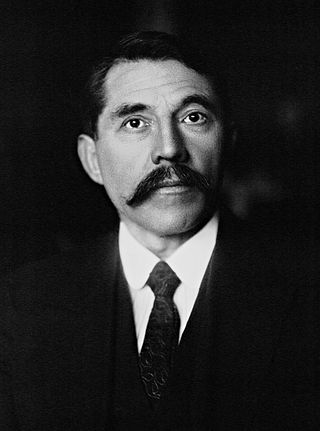
Marcel Cachin was a French Communist politician and editor of the daily newspaper L'Humanite.

The Site of the First National Congress of the Chinese Communist Party is now preserved as a museum in Shanghai, China. It is located in Xintiandi, on Xingye Road. It is located in the historical shikumen buildings in which the 1st National Congress of the Chinese Communist Party took place during the month of July in 1921.
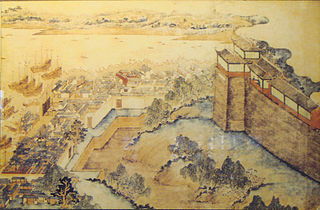

Huaihai Road or Huaihai Lu is a road in Shanghai, China. The central section of Huaihai Road is one of the two major shopping streets in central Shanghai; the other is Nanjing Road. Compared with the more touristy Nanjing Road, Huaihai Road is more upscale, and is the preferred destination of local residents. Huaihai Road comprises three sections, the main section being Middle Huaihai Road in the former French Concession of Shanghai. Middle Huaihai Road is also well known by its former French name Avenue Joffre. Huaihai Road East was in the original French Concession and was formerly known as Rue Ningpo (寧波路), while Huaihai Road West was an extra-settlement road built by the Shanghai International Settlement and formerly known as Jordan Road (喬敦路)

The Left in France The distinction between left and right wings in politics derives from the seating arrangements which began during the Assemblee Nationale in 1789. During the 1800s, left largely meant support for the Republic, whereas right largely meant support for the monarchy.

The Shanghai Exhibition Centre or the Shanghai Exhibition Hall is an exhibition and convention centre in central Shanghai. The building was built in 1955 as the Sino-Soviet Friendship Building to commemorate the alliance between China and the Soviet Union, a name by which many locals still refer to the building. Reflecting its original name, the design draws heavily on Russian and Empire style neoclassical architecture with Stalinist neoclassical innovations.

Yan'an Road is a road in Shanghai, a major east–west thoroughfare through the centre of the city. The modern Yan'an Road is in three sections, reflecting three connected streets which existed pre-1945: Avenue Edward VII, Avenue Foch and the Great Western Road. The streets were joined together under a common name by the Republic of China government in 1945, then renamed in the early 1950s after the Chinese Communist Party took over Shanghai. The road is named after Yan'an, the Communist base during the Chinese Civil War.

The 1st National Congress of the Chinese Communist Party was held in Shanghai and Jiaxing between July 23 and August 2, 1921. The Congress established the Chinese Communist Party (CCP). The congress began in a shikumen building of the French Concession area of Shanghai. In early June 1921, Dutch national Henk Sneevliet, also known as Ma Lin, a representative of Comintern, arrived in Shanghai, and urged various Communist cells in the country to get together for a national-level meeting. Russian Comintern representative Nikolski also attended the meeting. At the time, there were 57 members of the CCP. Notably, the two founders of the party did not attend the congress: Chen Duxiu and Li Dazhao.














